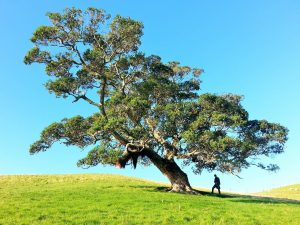Myths About Sunscreen and Burns

Myths About Sunscreen and Burns
It has been hot in Colorado lately, which has got us thinking about sunburns. While it may be fun spending your evenings by Boulder Reservoir, soaking up the rays, cooling off in the water, and enjoying a beautiful day, that fun can end quickly when that nice tan you are working on turns into a brutal burn. Sunburns are never fun and they can be difficult to heal. You likely have heard different methods of treating a sunburn, some of which you may have tried and others that seem too good to be true.
In fact, there are many myths about sunburns out there, and we want to set the record straight. Sunburns can be dangerous and could lead to skin cancer, which is why knowing about sunburns, how to treat them, and debunking some of the myths about sunburns is important!
At Azeal Dermatology Institute in Boulder, we know that the active lifestyles of Coloradans and the love for the outdoors can leave us exposed to the sun for a little too long. But knowing the truth about sunburns can help you better protect yourself and allow you to take care of your skin! In a previous blog, we went over some sunscreen and sunburn information, check that out and read on! In this blog, we are going to separate fact from fiction so you know a little more about sunburns.
Myth 1: A base tan will help you avoid burning
You have likely heard it before — getting a base tan at the beginning of summer can help keep you from getting burnt later on. Whether you lay out in the sun or head to a tanning bed, this is a myth. An article from Insider mentions research that states that a base tan can give your skin equivalent protect as SPF 3 or 4, providing subtle protection from absorbing UV rays. But when you think about it, you can easily get sunburned when you use SPF 15. So, the equivalent protection of an SPF 3 or 4 really won’t protect you from getting burnt. If you want to avoid burning, wear sunscreen with a higher SPF.
Myth 2: You can’t burn in the shade
Standing in the shade can make a world of difference when it comes to temperature. Stepping out of the sun and under a big and lush tree can take you from overheating to a comfortable temperature, but that doesn’t mean it can protect you from the sun! An article from Bazaar mentions that this is due to UV radiation reflecting off of nearby surfaces. UV radiation can reflect off grass, sand, water, and snow, meaning that you can get burnt even when you retreat into the shade.
Myth 3: You can’t get a burn on cloudy days
Most people feel like they can ditch the sunscreen on a cloudy day, but that is not the case. According to a Reader’s Digest article, 80 percent of the sun’s rays can pass through clouds, which allows you to still get burnt on a cloudy day. Then there is what is known as the broken-cloud effect. This phenomenon states that on partly cloudy days, the surface UV radiation can be raised by 25 percent and the UV rays linked to skin damage can be 40 percent stronger. Scientists suggest that this may occur when the UV rays reflect off the sides of dense clouds or as they are redirected when passing through thin clouds. No matter what causes it, the point is that clouds will not protect you from a burn and they may even make the burn worse! So, apply sunscreen, even on cloudy days.
Myth 4: You only need sunscreen in the summer
While you might spend more time outside during the summer and with fewer articles of clothing on, you still need sunscreen year-round. You can get a sunburn every day of the year, even in the winter. In fact, winter burns can be extremely brutal because snow can nearly double your UV exposure. The UV radiation reflects off snow, especially when fresh and can give you a bad burn. That is why it is important to wear sunscreen when enjoying some powder days in the mountains. And don’t forget the goggles, your eyes can get sunburned as well!
Myth 5: If you have dark skin, you don’t need to wear sunscreen
People with darker skin often think that they do not need sunscreen. Darker skin has more melanin, which acts to diffuse UVB rays and can help protect against burns to a certain degree. An article from Medical News Today states that people with darker skin should still wear a full spectrum sunscreen because UVA rays are not blocked by melanin. The article also mentions that the skin cancer survival rates are lowest among people with dark skin including, Native Americans, African-Americans, Asian-Americans, and Pacific Islanders. This could be because it may be less common, which means it is often detected in later stages, making it more dangerous.
If you have dark skin and notice it getting darker, that is a sign of sun damage. You may not see the redness or peeling skin that people with fairer skin see, but your skin changing color shows that it is trying to protect itself from UV radiation.
Myth 6: Tanning beds are safer than the sun
Many people think that tanning beds are safer than the sun but that is far from the truth. The Reader’s Digest article mentions that the American Academy of Dermatology states that tanning beds are responsible for more than 400,000 cases of skin cancer in the U.S. every year. Not enough to keep you away from the tanning beds? Here is another statistic for you: one session in a tanning bed can increase your risk of melanoma, which is the deadliest cancer, by 20 percent, squamous cell carcinoma by 67 percent, and basal cell carcinoma by 29 percent. Women under 30 who use tanning beds are six times more likely to develop melanoma. If these facts aren’t enough to keep you out of the tanning bed than nothing will.
Myth 7: You will burn worse when it is hottest out
The sun’s rays are most dangerous in the middle of the day, meaning between 10 a.m. and 4 p.m. But this doesn’t mean that you won’t get burned other times during the day. You can get burnt even when it is cooler out, and as we already have learned, you can get burnt even when it is not hot out (like in the winter) so sunscreen is necessary anytime you are outside at the same time as the sun.
Myth 8: A higher SPF doesn’t offer more protection
You may have heard the myth that a higher SPF really doesn’t offer that much more protection. The previous blog we linked before talks a little about SPF and why a higher number is better. The Insider article also talks about SPF. Joshua Zeichner MD states that an SPF of 30 means that you get the same amount of sun exposure after 30 minutes outside as you would get in one minute while unprotected. The article also mentions how it can be broken down, let’s take a look:
- SPF 15 protects against 93 percent of UVB rays
- SPF 30 protects against 97 percent
- SPF 50 protects against 98 percent
No sunscreen is 100 percent effective, but a higher SPF can offer better protection to your skin and help you avoid burns!
We know you have probably heard a few more myths regarding sunburns, but these are some of the most important! Understanding the severity of a sunburn and why it is so crucial to wear sunscreen will hopefully help you take the time to apply a high SPF before heading out into the sun.
At Azeal Dermatology Institute in Boulder, we offer skin care treatments and information to help you better care for your skin. If you want to invest in high-quality sunscreen, check out our online selection of dermatology approved sunscreens! If you have had more burns than you are proud of, be sure to schedule a skin cancer screening with us, we can help you diagnose anything and give you treatment options. Remember, early diagnosis is the best bet! Contact us today to learn more about burns and sunscreen or to get your questions answered.


